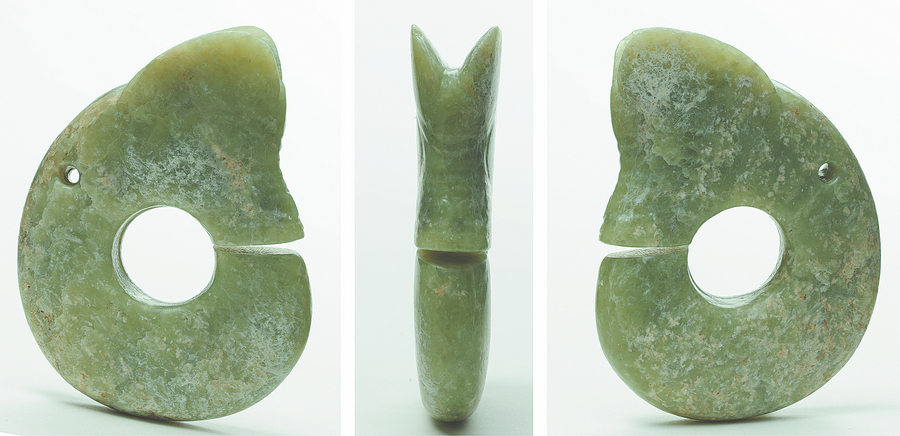

Discovery of new archaeological site sheds more light on Hongshan Culture, Zhou Huiying and Wu Yong report.
A large Hongshan settlement site has been discovered in Shangchaoyanggou village, just 6.5 kilometers from the Niuheliang archaeological site in Chaoyang city, Northeast China's Liaoning province, according to the latest research by the Liaoning Provincial Institute of Cultural Relics and Archaeology.
It marks the first time a large residential site of Hongshan Culture has been found near the Niuheliang sacred burial site.
After archaeological excavation of an area of 120,000 square meters, 27 dwelling sites have been discovered.
In the 1930s, a brilliant Neolithic culture renowned for its exquisite jades was discovered during the excavation of a site by a hill named Hongshan (meaning "the red mountain" due to the color of its rocks) in Chifeng city, Inner Mongolia autonomous region. In 1954, it was formally named Hongshan Culture. Other Hongshan Culture sites have been discovered in parts of today's Inner Mongolia, as well as Liaoning and Hebei provinces.
The discovery of the Niuheliang burial site in 1983 was a milestone in the study of Hongshan Culture.
After a life-size head sculpture of a goddess was excavated at the site, which dates back 5,000 to 5,500 years, a large center of religious belief and ceremony has gradually been revealed by the shovels of archaeologists.
"Hongshan Culture, represented by the Niuheliang site, relates to the critical period 5,000 years ago in China's prehistory," says Bai Baoyu, director of the Liaoning institute. "It is also a key to trace the origin of Chinese culture and civilization."